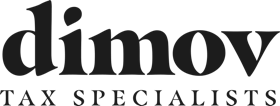Maximizing Charitable Impact: Donor Advised Funds, Charitable Remainder Trusts and Qualified Charitable Distributions
In a world where philanthropy meets financial strategy, understanding the intricacies of various charitable giving mechanisms can profoundly impact both the donor and the beneficiary. Dimov Tax & CPA Services is dedicated to guiding clients through the complexities of charitable contributions to maximize benefits for all parties involved. This article delves into three prominent methods: Donor Advised Funds (DAFs), Charitable Remainder Trusts (CRTs), and Qualified Charitable Distributions (QCDs), providing a comprehensive overview of their functions, regulatory frameworks and processes.
Donor-Advised Funds
A Donor-Advised Fund (DAF) is a philanthropic vehicle that allows donors to make a charitable contribution, receive an immediate tax deduction, and recommend grants from the fund over time. DAFs offer flexibility and ease for donors who wish to be involved in the grant-making process without the administrative burdens of managing a private foundation.
Regulatory Framework for DAFs
DAFs are regulated under the Internal Revenue Code (IRC) Section 4966, which defines and governs the operation of donor-advised funds. Key regulations include:
- Tax Deduction: Contributions to a DAF are tax-deductible in the year they are made. The IRS allows deductions up to 60% of adjusted gross income (AGI) for cash contributions and 30% for appreciated securities.
- Payout Requirements: While there are no minimum annual distribution requirements, DAFs are expected to make timely grants to qualifying charities.
- Prohibited Benefits: Donors and related parties cannot receive more than incidental benefits from the DAF.
Charitable Remainder Trusts
A Charitable Remainder Trust (CRT) is an irrevocable trust that provides income to the donor or other named beneficiaries for a specified period, with the remainder going to a designated charity. CRTs can be structured as either a Charitable Remainder Annuity Trust (CRAT) or a Charitable Remainder Unitrust (CRUT).
Regulatory Framework for CRTs
CRTs are governed by IRC Section 664, which stipulates the following regulations:
- Income Payments: CRATs pay a fixed annuity amount, while CRUTs pay a variable amount based on a percentage of the trust’s assets.
- Tax Benefits: Donors receive a charitable deduction based on the present value of the remainder interest going to charity. CRTs are also exempt from capital gains tax on the sale of appreciated assets.
- Payout Requirements: CRATs must distribute at least 5% of the initial fair market value annually, and CRUTs must distribute at least 5% of the annual fair market value of the trust’s assets.
Qualified Charitable Distributions
Qualified Charitable Distributions (QCDs) allow individuals aged 70½ or older to transfer up to $100,000 per year directly from their IRA to a qualified charity without including the distribution in their taxable income. QCDs are an efficient way to satisfy required minimum distributions (RMDs) while supporting charitable causes.
Regulatory Framework for QCDs
QCDs are regulated under IRC Section 408(d)(8), which outlines the following provisions:
- Eligibility: Individuals must be at least 70½ years old at the time of the distribution.
- Tax Benefits: QCDs are excluded from taxable income, which can be beneficial for minimizing adjusted gross income and potential Medicare premium increases.
- Distribution Limits: The maximum annual QCD limit is $100,000 per individual.
Common Ground: DAFs, CRTs and QCDs
Despite their differences, DAFs, CRTs, and QCDs share common objectives and benefits, including:
- Tax Efficiency: All three methods offer significant tax advantages, such as immediate deductions, capital gains tax avoidance and reduced taxable income.
- Philanthropic Impact: These tools enable donors to support charitable causes effectively, aligning with personal values and financial goals
- Flexibility and Control: Donors maintain a level of control over the distribution and management of their charitable contributions.
Tax Obligations
Understanding who should fulfill tax obligations is crucial for compliance and optimal benefit. Generally, any individual or entity considering utilizing DAFs, CRTs or QCDs should:
- Consulting a Tax Professional: Personalized advice from a tax professional ensures compliance with IRS regulations and maximizes tax benefits.
- Adhering to Eligibility Criteria: Eligibility requirements, such as age limits for QCDs or income thresholds for DAF contributions, must be met.
- Maintaining Documentation: Proper documentation of contributions and distributions is essential for substantiating tax deductions and ensuring transparency.
Process Steps for DAFs, CRTs, and QCDs
Establishing a Donor Advised Fund
- Selecting a Sponsoring Organization: A public charity that sponsors DAFs should be chosen such as a community foundation or financial institution.
- Contributing Assets: Donating cash, securities or other assets to the DAF, receiving an immediate tax deduction.
- Recommending Grants: Advise the sponsoring organization on grant distributions to qualifying charities.
- Monitoring Fund Performance: The fund’s investment performance and grant activity should be reviewed and managed.
Creating a Charitable Remainder Trust
- Consulting with Advisors: Legal and financial advisors should be worked with to determine the appropriate CRT structure (CRAT or CRUT).
- Drafting the Trust Agreement: The terms of the trust must be established including income beneficiaries payout rates and charitable remainder beneficiaries.
- Funding the Trust: Appreciated assets or other property should be transferred to the CRT.
- Administering the Trust: The trust’s assets should be managed, timely income distributions should be ensured and annual reporting requirements should be complied with.
Making a Qualified Charitable Distribution
- Verifying Eligibility: It should be confirmed that the individual is at least 70½ years old.
- Select a Charity: A qualified charity eligible should be chosen to receive tax-deductible contributions.
- Request the Distribution: The IRA custodian should be instructed to transfer funds directly to the charity.
- Document the Contribution: A written acknowledgment from the charity should be obtained for the QCD.
Services Provided by Dimov Tax & CPA Services
Dimov Tax & CPA Services offers a range of services to assist clients with DAFs, CRTs, and QCDs, including:
- Strategic Planning: Personalized advice on selecting the most suitable charitable giving vehicle based on financial goals and tax implications.
- Trust and Fund Administration: Assistance with the creation and ongoing management of CRTs and DAFs, ensuring compliance with regulatory requirements.
- Tax Filing and Reporting: Preparation and filing of necessary tax documents, including Form 8283 for non-cash contributions and Form 5227 for CRTs.
- Compliance and Auditing: Regular reviews and audits to ensure adherence to IRS regulations and mitigate risks.
Conclusion
Navigating the landscape of charitable giving requires a deep understanding of various financial instruments and their regulatory frameworks. Donor Advised Funds, Charitable Remainder Trusts and Qualified Charitable Distributions each offer unique advantages, enabling donors to achieve their philanthropic goals while maximizing tax benefits. By understanding the nuances of DAFs, CRTs, and QCDs, individuals can make strategic charitable contributions that benefit both their financial portfolio and the broader community. At Dimov Tax & CPA Services, expert guidance is provided to help clients make informed decisions and manage their charitable contributions effectively. By leveraging these powerful tools, donors can create lasting impacts for the causes they care about most.


